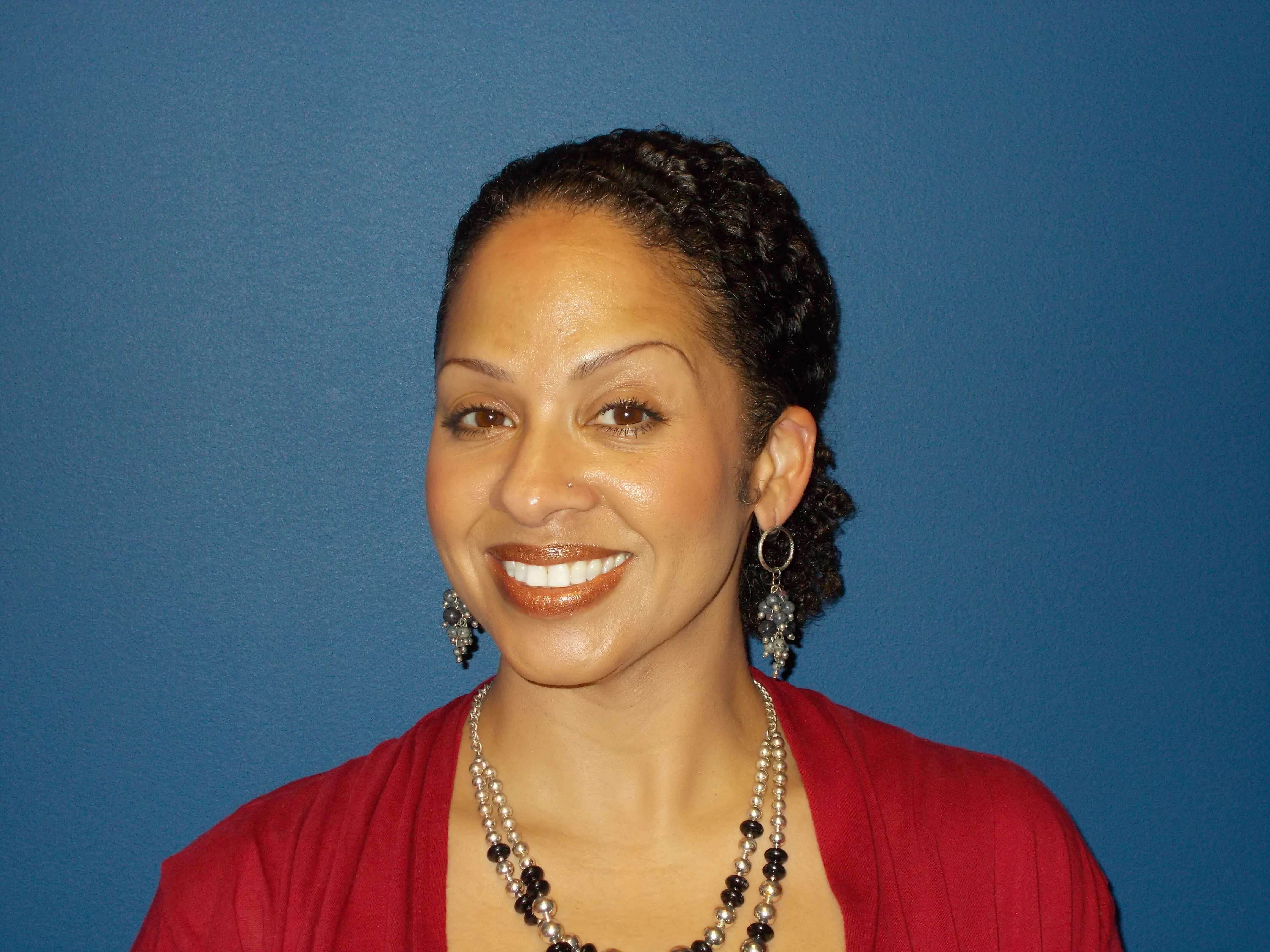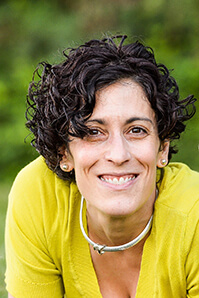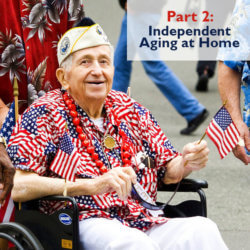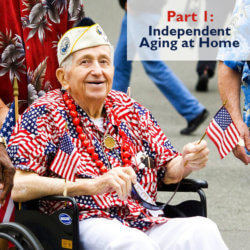Wellness Tag
Tag: Wellness
Nov
21
2017
Healthy Coping When Holidays Hurt
By: Chandelle C. Carter, Bereavement Coordinator
For most, the holiday season is a time of delight, gratitude and hope. As messages of family, joy and togetherness abound, we become warmly nostalgic; we find ourselves fondly reminiscing over holidays past, and eagerly anticipating the new memories we will create. We are grounded by long-held traditions, comforted by the closeness of loved ones, and encouraged by the promise of the new year ahead. As the renowned song proclaims, the holidays have been coined “The Most Wonderful Time of the Year.” For those who’ve experienced the death of a loved one, however, it can be the most difficult time of the year. For many who are grieving, holidays hurt.
Oct
03
2017
The Secret to Longevity: Advice from Nonagenarians
By: Gina Epifano, PT, COS-C, Director of Rehabilitation
Carl Reiner is well known as an actor, director and comedian. He’s also 95 years old. His recent HBO documentary “If You’re Not in the Obit, Eat Breakfast” is an inquisitive and insightful look into what life is like for people in their 90s. He talks with other famed nonagenarians including Dick Van Dyke, Betty White and Norman Lear, discussing their thoughts and ideas about their own longevity. Dick Van Dyke’s best tip? Keep Moving. He believes so strongly in the importance of maintaining mobility that he has written a book about it.
Jul
18
2017
Independent Aging at Home: Part 2
By Dorothy Davis, LPC, Vice President of Community Health and Strategy
By bringing healthcare home with connectivity and innovative aging, together with the community, we work to facilitate independent aging at home. One of the benefits of bringing healthcare home is nurses are able to see the patient’s home environment. As our CEO, Norene Mostkoff, has often stated, healthcare happens at home: healthcare happens in the bathroom, it happens in the living room, it happens in the kitchen—and our nurses are able to assess whether the home environment is conducive for recovery and healthy aging. Doctors are unable to see the environment in which patients live. A diabetic could repeatedly visit the ER and the doctor would never know it because the patient doesn’t have proper refrigeration for her diabetes medicine. Deploying home health clinicians is the way to fill this gap in care. The environment in which the patient lives contributes to their health. Health is all encompassing; health is our way of life, where we live, what we do, what we eat, and who we live with.
Jul
03
2017
Independent Aging at Home: Part 1
By Andrea Stevenson, RN, BSN, MPH, Executive Director of Home Health Services
As we celebrate Independence Day this July, let’s also celebrate the value of aging independently at home. With today’s technological advances, it has never been easier to bring healthcare to a patient’s home. This is particularly of value to aging patients who wish to remain independent for as long as possible. Aging independently means patients feel dignified, empowered and prepared to handle the many health-related aspects of aging. An independent patient is one who understands his or her disease or condition, and is an active participant in developing and meeting their healthcare goals.
As we celebrate July 4th, we honor the spirit of independence that defines our nation—and also the dignity and freedom we strive to preserve every day for the people we serve. For 76 years, Visiting Nurse Health System has stood alongside Georgia families, helping patients remain in the place they cherish most: home.
Our work in home health and hospice care is rooted in compassion, choice, and respect for every individual’s journey. On this Independence Day, we recognize not only our country’s freedom, but also the personal freedoms we protect—by delivering care that helps people live and die with dignity, surrounded by those they love.
From our family to yours, Happy Fourth of July.
#choice #freedom #healthcarematters #visitingnursehealthsystem #hospiceatlanta

As we celebrate July 4th, we honor the spirit of independence that defines our nation—and also the dignity and freedom we strive to preserve every day for the people we serve. For 76 years, Visiting Nurse Health System has stood alongside Georgia families, helping patients remain in the place they cherish most: home.
Our work in home health and hospice care is rooted in compassion, choice, and respect for every individual’s journey. On this Independence Day, we recognize not only our country’s freedom, but also the personal freedoms we protect—by delivering care that helps people live and die with dignity, surrounded by those they love.
From our family to yours, Happy Fourth of July.
#choice #freedom #healthcarematters #visitingnursehealthsystem #hospiceatlanta
...
We`ve enjoyed celebrating our Certified Nursing Assistants for CNA this month and during last week`s CNA week!! Thank you to these amazing clinicians - your clinical skill, compassionate care, and strength you bring to every patient and family you serve makes a lasting impact. This month and every month, we’re grateful for the heart you put into your work. #CNA #hospiceatlanta #visitingnursehealthsystem #passion #Mission

We`ve enjoyed celebrating our Certified Nursing Assistants for CNA this month and during last week`s CNA week!! Thank you to these amazing clinicians - your clinical skill, compassionate care, and strength you bring to every patient and family you serve makes a lasting impact. This month and every month, we’re grateful for the heart you put into your work. #CNA #hospiceatlanta #visitingnursehealthsystem #passion #Mission ...
Today we pause to honor Juneteenth - a powerful reminder of resilience, freedom, and the continued pursuit of equity. At Visiting Nurse Health System, we recognize this day as more than a historic milestone, more so a call to action to listen, learn, and continue building a community where dignity and compassion are extended to all. Having provided care into the homes of Georgians for 76 years, our mission is rooted in the belief that each individual deserves equal access to quality health care. On this Juneteenth, we reaffirm that belief. Thank you to our community members, supporters and healthcare partners who help us serve with heart and humanity each day. #Juneteenth #EquityInCare #VisitingNurseHealthSystem #CommunityCare #hospiceatlanta

Today we pause to honor Juneteenth - a powerful reminder of resilience, freedom, and the continued pursuit of equity. At Visiting Nurse Health System, we recognize this day as more than a historic milestone, more so a call to action to listen, learn, and continue building a community where dignity and compassion are extended to all. Having provided care into the homes of Georgians for 76 years, our mission is rooted in the belief that each individual deserves equal access to quality health care. On this Juneteenth, we reaffirm that belief. Thank you to our community members, supporters and healthcare partners who help us serve with heart and humanity each day. #Juneteenth #EquityInCare #VisitingNurseHealthSystem #CommunityCare #hospiceatlanta ...
Happy Father’s Day from Visiting Nurse Health System! 💙
Today we honor fathers, father figures, grandfathers and the fathers who are caregivers -leading lead with love, strength, and quiet dedication at home and in our communities. Thank you for all you do!
#FathersDay #VisitingNurse #HonoringDads #visitingnursehealthsystem

Happy Father’s Day from Visiting Nurse Health System! 💙
Today we honor fathers, father figures, grandfathers and the fathers who are caregivers -leading lead with love, strength, and quiet dedication at home and in our communities. Thank you for all you do!
#FathersDay #VisitingNurse #HonoringDads #visitingnursehealthsystem
...
📢 We’re proud to share that Visiting Nurse Health System made front page news this week in Home Health Care News!
📰 Check out the featured article where our President & CEO, Dorothy Davis, talks about the growing financial pressures nonprofit home-based care providers face—especially in a market increasingly shaped by Medicare Advantage.
Dorothy shares insights on how competition for tier 1 patients and reimbursement challenges are shaping the future of care—not just for our patients, but for all of us who may one day need these vital services.
💬 We’re grateful to be part of this important conversation about the sustainability of nonprofit home health—and the critical business drivers that will define its future.
📖 Read the article here 👉https://vnhs.org/news/
#HomeHealthCare #NonprofitLeadership #MedicareAdvantage #ValueBasedCare #VisitingNurseHealthSystem #HealthCareNews #FutureOfCare

📢 We’re proud to share that Visiting Nurse Health System made front page news this week in Home Health Care News!
📰 Check out the featured article where our President & CEO, Dorothy Davis, talks about the growing financial pressures nonprofit home-based care providers face—especially in a market increasingly shaped by Medicare Advantage.
Dorothy shares insights on how competition for tier 1 patients and reimbursement challenges are shaping the future of care—not just for our patients, but for all of us who may one day need these vital services.
💬 We’re grateful to be part of this important conversation about the sustainability of nonprofit home health—and the critical business drivers that will define its future.
📖 Read the article here 👉https://vnhs.org/news/
#HomeHealthCare #NonprofitLeadership #MedicareAdvantage #ValueBasedCare #VisitingNurseHealthSystem #HealthCareNews #FutureOfCare
...
VNHS Spotlight!
We`re pleased to share our award winning Chief Innovation Officer, Jaqueline Ralph-Blair, was honored today with Modern Healthcare’s Leading Woman of 2025 award!
This prestigious award honors 30 leading women and 10 rising stars who are making lasting positive changes to the business of healthcare.
Celebrated today in Chicago at Modern Healthcare’s 15th Annual Leading Women Conference & Awards Luncheon, Jacqueline and her 2025 class of Modern Healthcare`s Leading Women, received a vanguard award honoring their achievements in and contributions to healthcare, to include directing strategic partnerships, designing cutting-edge technologies, and spearheading revenue-boosting initiatives.
Congratulations Jacqueline and THANK YOU for all you do!!
#leadership #CSuite #givingback #healthcare #visitingnursehealthsystem #hospiceatlanta

VNHS Spotlight!
We`re pleased to share our award winning Chief Innovation Officer, Jaqueline Ralph-Blair, was honored today with Modern Healthcare’s Leading Woman of 2025 award!
This prestigious award honors 30 leading women and 10 rising stars who are making lasting positive changes to the business of healthcare.
Celebrated today in Chicago at Modern Healthcare’s 15th Annual Leading Women Conference & Awards Luncheon, Jacqueline and her 2025 class of Modern Healthcare`s Leading Women, received a vanguard award honoring their achievements in and contributions to healthcare, to include directing strategic partnerships, designing cutting-edge technologies, and spearheading revenue-boosting initiatives.
Congratulations Jacqueline and THANK YOU for all you do!!
#leadership #CSuite #givingback #healthcare #visitingnursehealthsystem #hospiceatlanta
...
Today, we remember and honor all who gave their lives in service to our country. Their courage, sacrifice, and dedication will never be forgotten. Forever grateful. 🕊️
#MemorialDay #HonorAndRemember #NeverForget #hospiceatlanta #visitingnursehealthsystem

Today, we remember and honor all who gave their lives in service to our country. Their courage, sacrifice, and dedication will never be forgotten. Forever grateful. 🕊️
#MemorialDay #HonorAndRemember #NeverForget #hospiceatlanta #visitingnursehealthsystem
...
🏌️♀️ We’re proud to be part of a great cause on and off the course!
Visiting Nurse Health System | Hospice Atlanta was honored to participate in and sponsor this year`s LeadingAge Georgia Golf Tournament—an event that brings together healthcare partners and changemakers in senior care.
This tournament helps sustain the vital work of LeadingAge Georgia, empowering member organizations that serve and advocate for our aging population across the state. It’s a privilege to be part of a community so committed to compassionate, quality care for older adults. ⛳️💙
#LeadingAgeGA #GolfForACause #SeniorCare #VisitingNurseHealthSystem #HospiceAtlanta #AgingWithDignity #CommunitySupport

🏌️♀️ We’re proud to be part of a great cause on and off the course!
Visiting Nurse Health System | Hospice Atlanta was honored to participate in and sponsor this year`s LeadingAge Georgia Golf Tournament—an event that brings together healthcare partners and changemakers in senior care.
This tournament helps sustain the vital work of LeadingAge Georgia, empowering member organizations that serve and advocate for our aging population across the state. It’s a privilege to be part of a community so committed to compassionate, quality care for older adults. ⛳️💙
#LeadingAgeGA #GolfForACause #SeniorCare #VisitingNurseHealthSystem #HospiceAtlanta #AgingWithDignity #CommunitySupport
...
🎉 Please join us in celebrating our Employee of the Month – Dykia Brummitt! 🌟
Dykia’s dedication, compassion, and positive team spirit make a lasting impact on everyone she cares for. Her commitment to our mission and values here at Visiting Nurse Health System shines through in all she does, and we are so grateful to have her on our team. 💙👏
Congratulations, Dykia—you truly embody what it means to provide care with heart! 🏆
#EmployeeOfTheMonth #VisitingNurseProud #HealthcareHeroes #ThankYouDykia #visitingnursehealthsystem

🎉 Please join us in celebrating our Employee of the Month – Dykia Brummitt! 🌟
Dykia’s dedication, compassion, and positive team spirit make a lasting impact on everyone she cares for. Her commitment to our mission and values here at Visiting Nurse Health System shines through in all she does, and we are so grateful to have her on our team. 💙👏
Congratulations, Dykia—you truly embody what it means to provide care with heart! 🏆
#EmployeeOfTheMonth #VisitingNurseProud #HealthcareHeroes #ThankYouDykia #visitingnursehealthsystem
...
🎉 Celebrating Nurses Month continues with our incredible nursing team at Hospice Atlanta | Visiting Nurse Home Health! 💙🩺Here`s our Home Health team celebrating this week! We’re so proud of our compassionate, dedicated nurses who go above and beyond every day to care for our community in the comfort of their home. Thank you for all that you do! 👏
#NursesMonth #VisitingNurseHealthSystem #ThankYouNurses #hospiceatlanta

🎉 Celebrating Nurses Month continues with our incredible nursing team at Hospice Atlanta | Visiting Nurse Home Health! 💙🩺Here`s our Home Health team celebrating this week! We’re so proud of our compassionate, dedicated nurses who go above and beyond every day to care for our community in the comfort of their home. Thank you for all that you do! 👏
#NursesMonth #VisitingNurseHealthSystem #ThankYouNurses #hospiceatlanta
...
We want to extend our heartfelt thanks to everyone who joined us last Saturday for Hospice Atlanta`s 3rd Annual Resilience bereavement event. Whether you came to listen, speak, or simply be present, your participation helped create a space of healing, support, and strength.
A special thank you to our incredible speakers, who so generously shared their stories, insights, and compassion. Your words touched many and reminded us all that even in grief, we are not alone.
To every attendee — your presence was powerful. Thank you for showing up for yourselves, and for each other. Together, we honored our losses and found comfort in community. Thank you to our gracious volunteers and staff who supported the event operations. Let’s continue to walk this path together. 💛
#ResilienceEvent #GriefSupport #ThankYou #HealingTogether #hospiceatlanta #visitingnursehealthsystem

We want to extend our heartfelt thanks to everyone who joined us last Saturday for Hospice Atlanta`s 3rd Annual Resilience bereavement event. Whether you came to listen, speak, or simply be present, your participation helped create a space of healing, support, and strength.
A special thank you to our incredible speakers, who so generously shared their stories, insights, and compassion. Your words touched many and reminded us all that even in grief, we are not alone.
To every attendee — your presence was powerful. Thank you for showing up for yourselves, and for each other. Together, we honored our losses and found comfort in community. Thank you to our gracious volunteers and staff who supported the event operations. Let’s continue to walk this path together. 💛
#ResilienceEvent #GriefSupport #ThankYou #HealingTogether #hospiceatlanta #visitingnursehealthsystem
...
💐Happy Mother`s Day!💐
#mothersday #hospiceatlanta #visitingnursehealthsystem

💐Happy Mother`s Day!💐
#mothersday #hospiceatlanta #visitingnursehealthsystem
...





